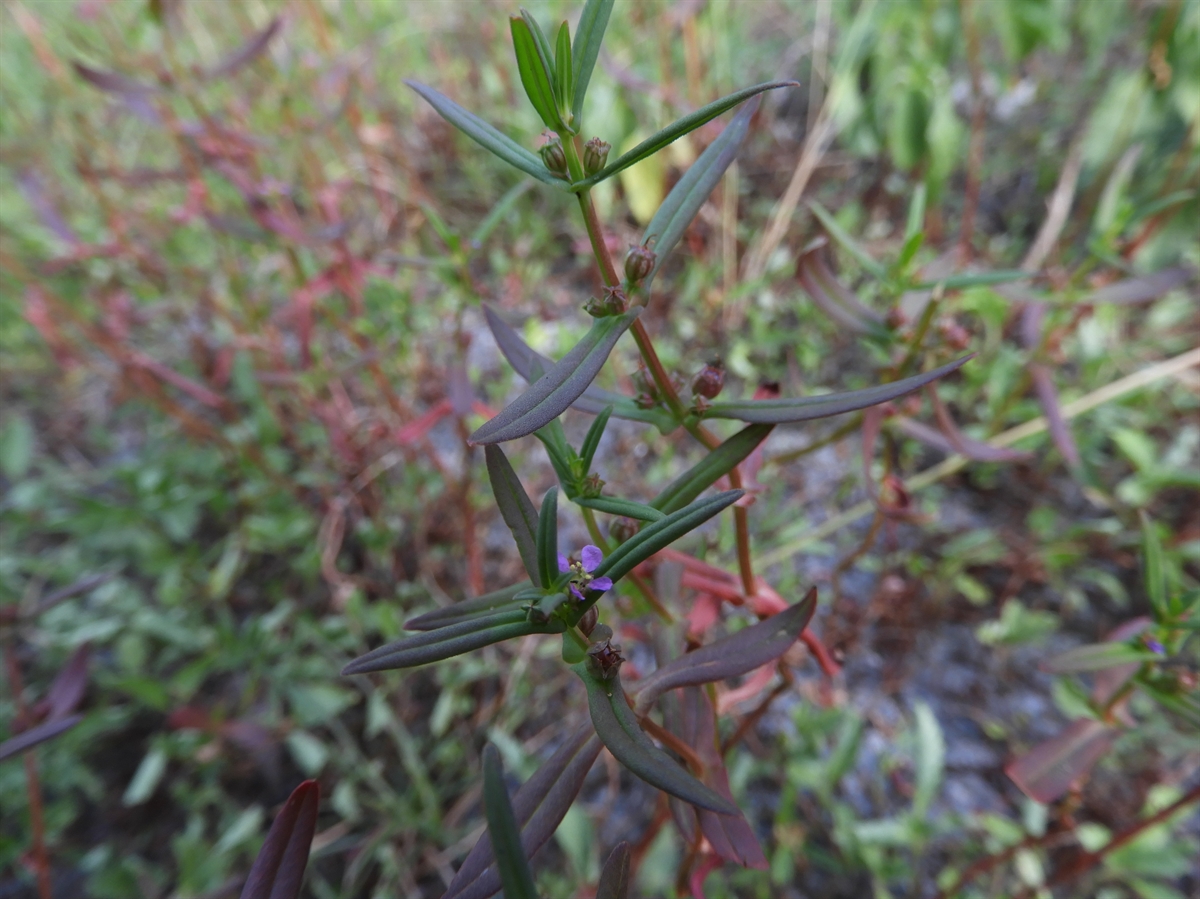Habit: Ammannia coccinea grows as a succulent herb up to 65 cm in height with photosynthetic stems to 1 cm in diameter. The sessile leaves are arranged oppositely, oblong to linear, to 12 cm long, 1 cm wide. The leaves have an acute leaf apex and an entire margin with an auriculate leaf base.
The complete, perfect, actinomorphic flowers are solitary to few flowered cymes arising in leaf axils. The calyx has 4 fused, ribbed, greenish sepals. The corolla has 4 unfused, pink petals. There are 4 or 5 unfused stamens. The ovary is superior, lacks a style, and has 4 locules each with many ovules. The fruit is a round capsule.
Habitat: Ammannia coccinea grows in Fresh Water Wetlands including Sabal palmetto areas.
Distribution: Ammannia coccinea occurs throughout the Lucayan Archipelago, the Caribbean region, Central and South America, North America. It has become an invasive species in Asian and Europe.
Medicinal/Cultural/Economic usage: Ammannia coccinea is not known to be used medicinally in the Bahamas.
